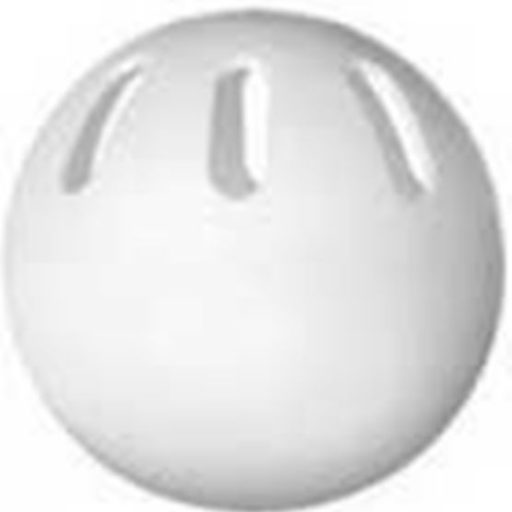This is the granddaddy of all plastic bats. It was created in 1953 as part of the Wiffle Ball Game, which included the now famous plastic ball with 6 holes on one side and a solid circle on the other. The ball is a fantastic piece of equipment that I can’t ever imagine not being used. The bat typically comes with the ball and you can see cases of them at any retail store in vacation areas.
The bat is what I used my entire youth to play Wiffle ball. The bat is 32″ long and 1.25″ in diameter. There is virtually no weight to this product and a kid from 5 years old to 80 could swing this bat with good bat speed.
Look and Feel – I am partial to any bat that feels like a bat. No matter how much you customize this bat, it has no real bat feel to it. There is no knob at the end of the bat, the handle has some perforated dots that can help with grip. The bat quickly tapers to its full diameter of 1.25″ and stays that way for 22″ of the bat.
Durability and Construction – The bat is made from a medium weight plastic, if you can find an older bat, from the early 1980’s scoop it up. We used to use that bat to hit tennis balls and it never broke. The new bat is not as strong. In fact, if you use this bat for anything but a Wiffle Ball itself, certainly it is the intended use of the bat, it will not hold up to any use with a blitzball, solid Wiffle Ball, training balls, or poly balls.
If you use this for wiffle balls only the bat will last a long time, probably many years, mine are 5 – 10 years old. However, they have not been used heavily.
The good Wiffle Bat was the more blocked logo. The newer bat has a more rounded logo and round tip to the bat.

Customization Possibilities – In 2010, when my team played Doom in a tourney final, they had there original yellow bat with all there marks on it for tourney wins. It was the single most impressive customized bat I had ever seen.
Keep in mind must customized bats are not allowed in tournaments.
Option 1 – You can certainly tape the bat to give it some strength and added pop, which typically is not allowed in tournaments.
Option 2 -You can cut the handle off about 3-4 inches. Once you open the bat you can stuff the bat with newspaper, peanuts, and I have also heard of people using spray foam. After you stuff the bat you will want to add a new handle to the bat, the handle can be anything from a broomstick, dowel or rake handle. You are going to want to make this handle 5 – 7″ depending on your prefence. Once you cut the handle, you will need to file it down a bit to fit it snuggly into the bat. Once it is nice and tight you can use a few screws to keep this in place. I have had the experience of this bat coming apart during a swing, it isn’t fun. Put in an extra screw! Once this is in place you can tape up the bat with electrical tape, leather bat grip, or other taping options. For the final piece, we used to tape the bat from 22 – 31″, that can work. However, another method is to use the tube of a bike tire to cover up the 9 – 10″ of bat.
Option 2 can certainly add some good depth. I am not sure about the long-term durability, because most bats I modified this way typically break within a few months, but for $10 – $15 total cost it is not a bad solution.
You can also get very creative with spray paint, tape, and other customizable features that may not help performance but you can get some serious style points.
Performance – For the non-modified or corked bats, the performance at both of my fields was just not good enough. With 100′ plus centerfields with walls up to 13′ this bat was not designed to really hit a ball that far. I played in many tourneys through the years with 80′ fences and this bat was fine for fences at that depth. I only used this bat when we had to because of tourney rules.
Cost – You can’t beat the cost of $2 – $3 and typically you get a ball with it.
Total Bat Score: 19
- Look and Feel – 3
- Durability and Construction – 3
- Customization Possibilities – 5
- Performance – 3
- Cost – 5




